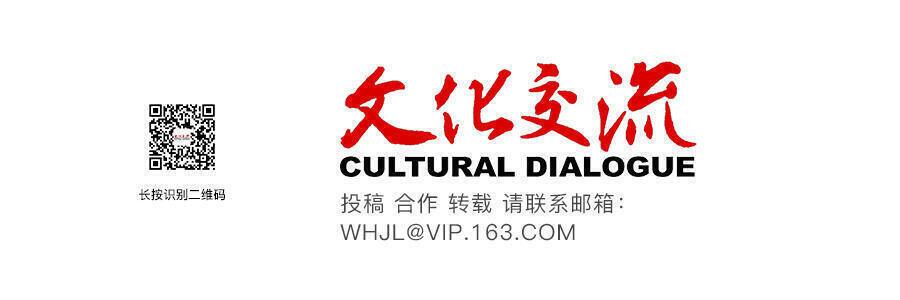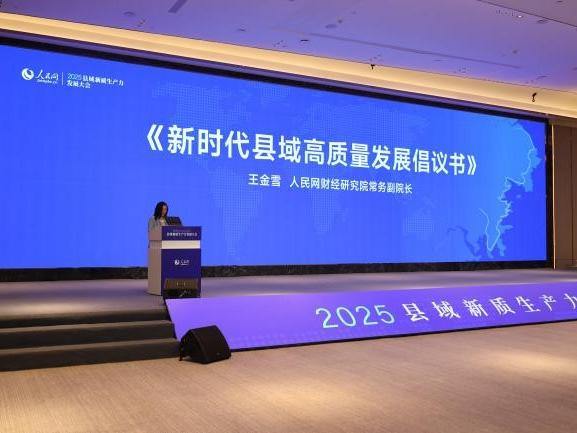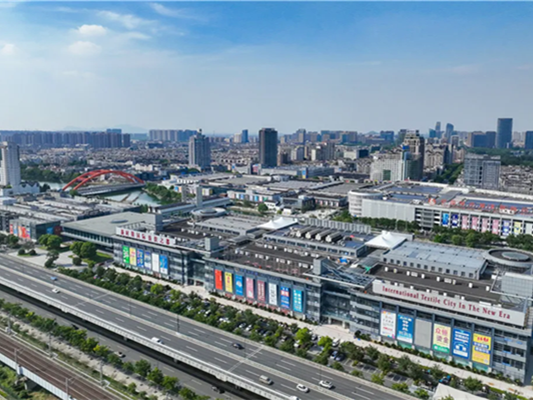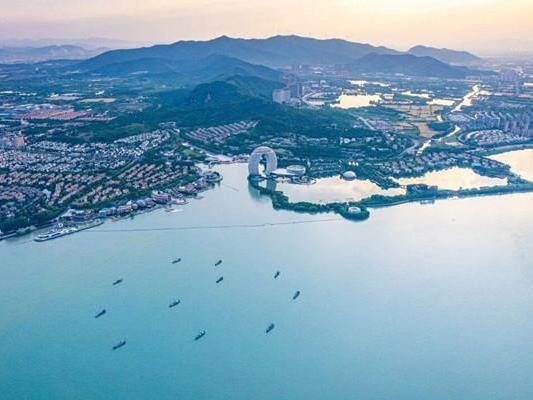Because of Wang Xizhi (303-361) and his calligraphy, it is only natural that Shaoxing in Zhejiang now hosts the Orchid Pavilion Calligraphy Festival. The 35th festival took place in 2019.
It was in the time of the Tang Dynasty (618-907) that Wang’s fame spread overseas. Wang’s art of calligraphy reached Japan. From 7th century to 9th century, Japanese diplomats sent to the Tang brought back to Japan many original calligraphy artworks and replicas including those by Wang Xizhi and his son Wang Xianzhi. Wang’s works were widely admired and worshipped in the island nation. Monk Jianzhen, a Chinese Buddhist, brought an original calligraphy work by Wang Xizhi, to Japan. Before long, Wang’s reputation spread to other neighboring countries where Chinese functioned as the official written language.

If Japan was the first foreign country that worshipped Wang’s calligraphy, then it wouldn’t be difficult to understand why Japanese calligraphers were among the first who came to visit Shaoxing in the early 1980s shortly after China began its reform drive and opened the door to the outside world. From 1985 to 1987, Orchid Pavilion in Shaoxing hosted three consecutive gatherings of celebrated Chinese and Japanese calligraphers.
In fact, many sinologists in the west have recognized Wang’s brilliance as a calligrapher. Osvald Sirén (1879-1966), a Swedish art historian, wrote in his book about the history of Chinese early paintings in 1933 that no other artists in China attained more admiration than Wang Xizhi.
Osvald Sirén was neither the first nor the last western scholar who saw the artistry of Wang Xizhi. On December 22, 2019, Pietro De Laurentis, an Italian sinologist based in Naples, Italy, gave a lecture at Shaoxing Library. The lecture was about the authentic works of Wang Xizhi. Among the audience were calligraphers and enthusiasts. The 43-year-old Italian speaks Chinese fluently. His lecture focused on an inscription on a stone tablet made in 672 by a Chinese Buddhist monk. The stone tablet is now in Xi’an. What makes this engraved inscription special is that all the separate words of the inscription were selected from the authentic artworks by Wang Xizhi. His lecture gave a deep insight into Wang Xizhi’s works and the audience found the lecture enlightening and helpful.
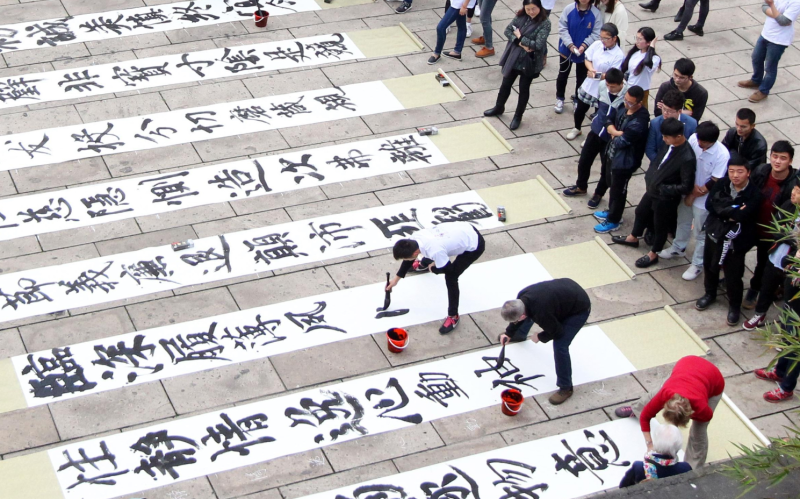
Pietro De Laurentis has studied in China several times and is a prominent expert on Chinese calligraphy for over 20 years. He is good at writing the regular script in small characters, one of the subgenres in Chinese calligraphy, and, to the surprise of many people, he is even good at composing Chinese poems in the traditional format. At the Orchid Pavilion Calligraphy Festival in 2019, Pietro De Laurentis submitted a paper to the symposium. In the paper, he suggested that in all the extant works attributed to Wang Xizhi, there are no more than 12 authentic works that add up to 734 words that speak of Wang’s calligraphic achievement. Pietro De Laurentis plans to write a book in English on Wang Xizhi and he hopes he can work in partnership with Shaoxing. He talked about the plan in June 2019 in a conversation with Zhang Tiangong, a Chinese calligrapher.
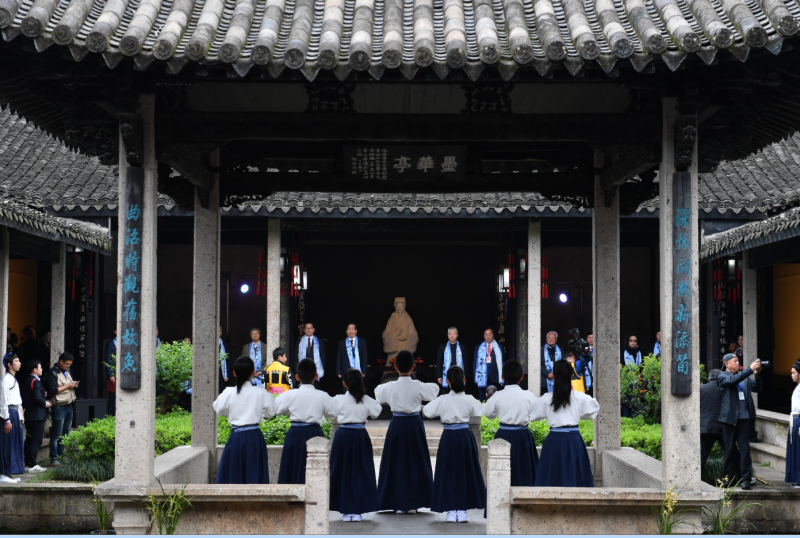
Of the old-generation Japanese calligraphers, Session Uno (1912-1995) stood out. A giant presence in the circles of Japanese calligraphy of his time, Uno opened up a space for the avant-garde style in calligraphy. And he was specialized in the studies of Wang Xizhi’s calligraphy.
In March 1987, an exhibition was held in the National Art Museum of China in Beijing in celebration of the birth year of both Qigong (1912-2005, a renowned Chinese calligrapher, artist, connoisseur, and sinologist) and Session Uno. Both of them were 75 years old that year. On display were 75 calligraphic works, 37 from each, and wrapped up by a collaborated work.
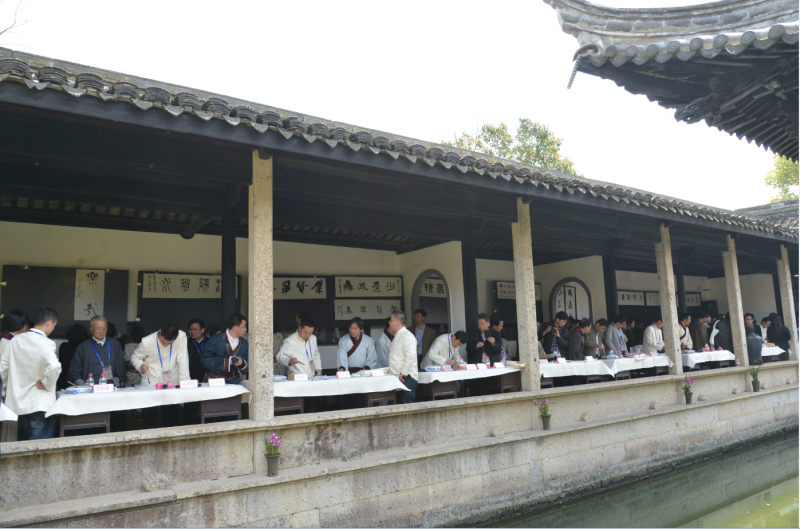
Roland Hans-Peter Buckingham, a 47-year-old artist of UK and Ph.D. from the University of Sunderland in London, has a passion for Chinese calligraphy. Wang Xizhi is his favorite Chinese calligraphy master. His doctoral dissertation was on a look into the calligraphy of the east and the west. In 2019, Roland spent about three months studying a calligraphic course at the School of Calligraphy at Shaoxing University. Since January 1, Roland has been running Chinese Visual Art on social media. It promotes Wang Xizhi and his preface to westerners. In the past five years, the School of Calligraphy in Shaoxing has had over 2,000 international students taking short-term calligraphy courses.
In 1982, the Orchid Pavilion Calligraphy Association came into being. It is based in Shaoxing and embraces all calligraphers and enthusiasts across the world. In recent years, the association has taken steps in promoting international exchanges. Nowadays, the association has Seoul Academy and Tokyo Academy as its international branches.
